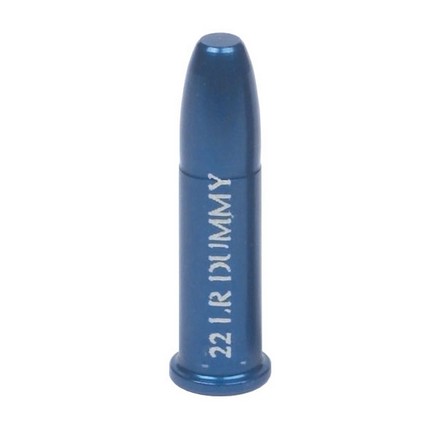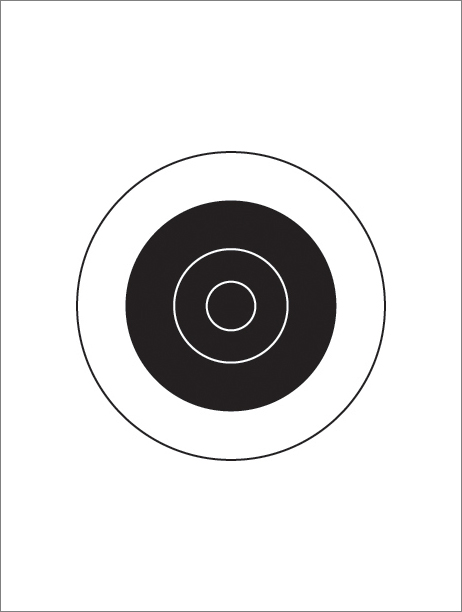The art of shooting without shooting. Here’s how to make a big improvement in your on-target accuracy come Spring, and it doesn’t cost a thing but some time… Read on!
By Glen Zediker
Defined: dry-firing is shooting with no ammunition. Cock the gun, hold on the target, break the trigger. It’s a simulation.
First: Will dry-firing hurt my gun?
No. Any and every centerfire bolt-action rifle I know of (that “we” use anyhow) can be dry-fired endlessly with no damage done, and it’s the same for pistols. If you are at all worried, use a “snap-cap,” which is a cartridge duplicate that provides a cushion. Midsouth Shooters Supply carries them. .22 rimfires people have different opinions about. The fear is peening the area around the chamber friom firing pin contacts. Ruger actually encourages dry-firing its 10/22 (so says my factory manual). Inserts are also available to cushion the blow, and even a spent cartridge case left in place will do the trick too.

Check out a few products at Midsouth, if you’re worried…
Every shooting coach I know of sings the value of dry-firing. It’s a training staple for competitive shooters, and, as a matter of fact, me, David Tubb, and most others I know spend time dry-firing prior to an event to get mind and muscles warmed up. However! It’s the equivalent of stretching for a runner. As with many things, most things, as a means toward improvement, you get from it what you put into it. A big part of that is also in how you put into it.
First is safety! Make double-daggone sure there is no ammunition in the gun (of course) and also that there is none nearby. No loaded magazines in vicinity. I’ve heard stories from people who reloaded their handguns, in this instance, after a dry-firing session and then decided to snap just one more “for the road.” Yikes. Don’t trust memory.
Part of the point and advantage to dry-firing is elimination of distractions. We can then see and sense things when we’re in our little cocoons that may be obscured in live-fire at the range. I’m not saying that no one can tune in as keenly outdoors with a loaded gun, but can say there are always more distractions in that environment. The point is to see it dry-firing, and then experience it again at the range. That’s the idea.
The first and foremost conviction necessary to make dry-firing “work” is a commitment to two things. One is observation, close observation, of sight location and movement. No matter what, that’s the “it.”
You must be able to connect sight location at the instant you are aware of the audible “click” of the hammer or striker fall. Not just when the trigger breaks. There’s a few milliseconds in the interim. It won’t take long to, on its own, develop the skill of “calling” shots with more precision and realism dry-firing with this as a goal. (Calling a shot is providing an estimation of its location on the target based on sight location at the moment of firing.) It’s how a shooter learns to separate what should be and what actually is. If you are perfectly aware of the sight location on the target at the strike, that by itself may have improved followthrough. You are then “holding on” just a little longer, and I discussed the importance of that in an earlier article in this series. Experience will show you the difference between seeing the sight picture and breaking the trigger, and calling that result, compared to seeing the result upon the strike, and calling that result. It’s a small thing, but many small things happen in the time it takes for the bullet to exit. No matter what your last name is, everyone’s gun is moving. It’s also here that the shooter learns to watch closely for movement.
Dry-firing allows a shooter to discover perfection in natural point of aim. Natural point of aim (let’s cut it to “npa”) is a drilled and preached fundamental by every instructor or authority I know. Dry-firing gives the opportunity to honestly get in tune with it. At least three things you’ll learn: npa is a finite point, not an area. It has two components, vertical and horizontal. And it changes! Even among the very best shooters, it’s not likely to start and stop with the exact same body orientation for a full shot string.
A huge key to refining npa is watching for sight movement just before or just as the trigger breaks. That’s easy to see in dry-firing and more difficult with a loaded gun. I’m not exactly sure why npa sometimes “reveals” itself in this moment, but it does.

The target you select for dry-firing exercises can be very variable. If you’re looking to replicate the same target you use outdoors on a small scale, a calculator and computer printer gets you close, and experimentation gets you closer. Otherwise, anything can work. Light switches are great for pistol practice. They look a lot like a USPSA-style “Milpark.” And, why not also try the “Holding Drill” targets shown last time?

Information in this article was adapted from material in several books published by Glen Zediker and Zediker Publishing. Glen is a card-carrying NRA High Master and earned that classification in NRA High Power Rifle using an AR15 Service Rifle. For more information and articles available for download visit ZedikerPubllishing.com








